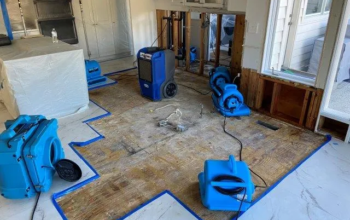An evaporative cooler is a device that cools the air using the simple process of water evaporation. These units are also known as a desert, swamp, or air conditioners. They differ from refrigeration and absorption air conditioning, which use vapor-compression or absorption refrigeration cycles.
Because they produce humid air conditions, these small-scale coolers are commonly known in the US as swamp coolers. They are also called “sump coolers”. Our portable evaporative cooler also has air washers and wet cooling systems.
Evaporative cooling is the best choice for climates that have high humidity but hot air. Evaporative cooling is a great example in western US states or the mountains. Because water is readily available, this is why swamp coolers are so popular.
This type is suitable for cooler areas of the US. The installation and maintenance costs of this cooler cooling system are often lower than that of refrigerative cooling. Sometimes it can reach as high as 80%. For the best performance, you can use both vapor-compression cooling and evaporative cool together. Some evaporative cool can be used as humidifiers during heating seasons.
Cooling can be used in areas with moderate humidity. You might see this cooling being used in commercial kitchens, industrial plants, laundries, and dry cleaners. However, in very humid climates, evaporative cool may not provide much thermal comfort due to increased ventilation and air movement.
How Do Evaporative Fans Work?
Evaporative Cooling is the phenomenon where a liquid evaporates into the air to cool it. Latent heat refers to the heat needed to evaporate liquids. It comes from the liquid as well as from surrounding gas and surfaces.
When you consider the water vapor, the difference in the wet-bulb temperature to the air’s dry-bulb temperature is what measures the potential for this kind of cooling. The larger the difference, then the greater the cooling effect. If the temperatures remain the same, there will be no net evaporation or cooling.
One simple example is sweat. This is where your body releases heat to cool off. Heat transfer is affected by the rate at which the body evaporates water. This in turn depends on the temperature and humidity of the surrounding air. You will feel more sweaty on hot and humid days.
A self-regulating drink can is another recent application of evaporative coolers. Inside the can is a compartment that contains a desiccant along with a cooling fluid. Just before you take a drink out of the can, the desiccant is brought into contact with the cooling fluid to induce evaporation.
Why Do We Use Evaporative Coolers?
This type of cooling is used to keep buildings cool for thermal comfort. This is because it is very affordable and uses less energy than other types of cooling. However, it requires a lot of water and is only efficient when the relative humidity drops. This is why it works well in dry climates.
In cryogenic applications, also evaporative cooling is possible. The liquid evaporates when the vapor is above the reservoir. A 1-K pot is formed when ordinary helium is cooled to a temperature of at least 1.2K. Helium-3 provides temperatures below 300mK.
The vapor pressure of liquids drops with temperature, which makes cooling less effective. This limits the temperature that a liquid can reach.




